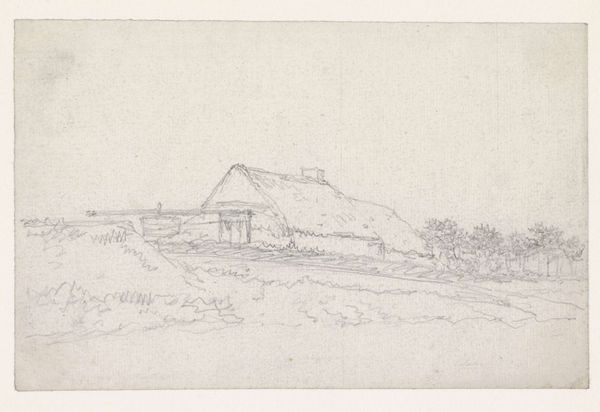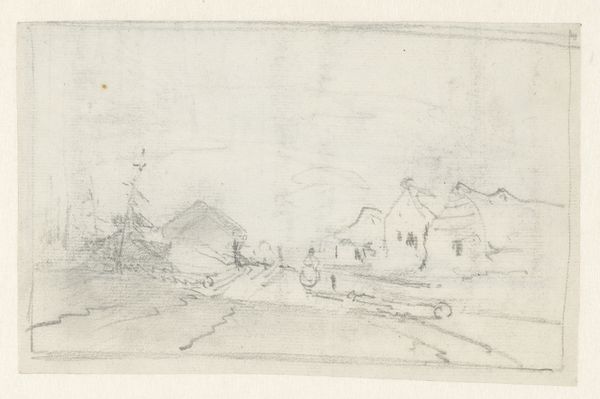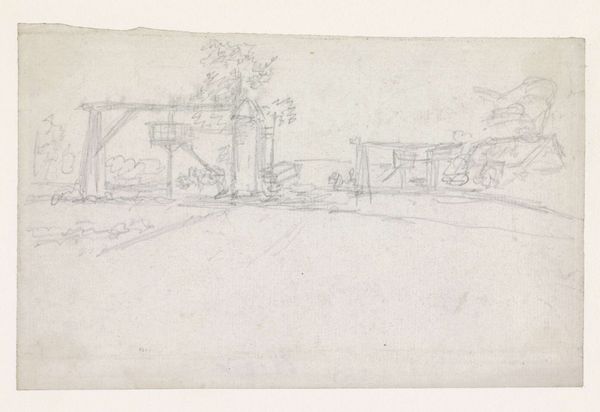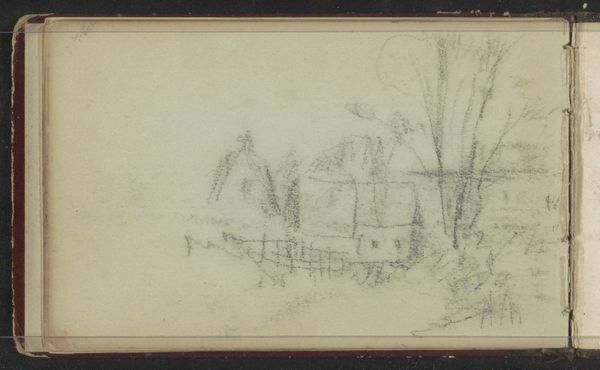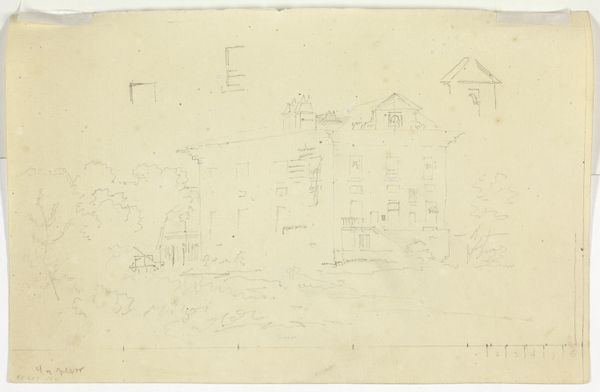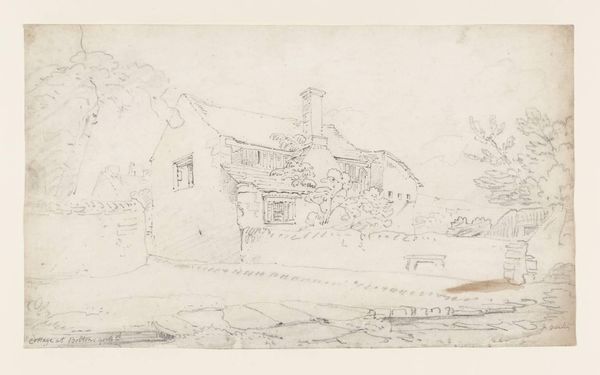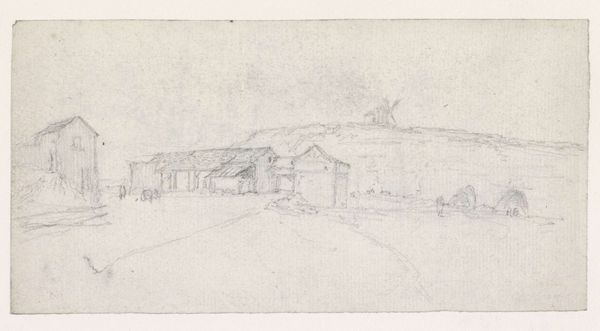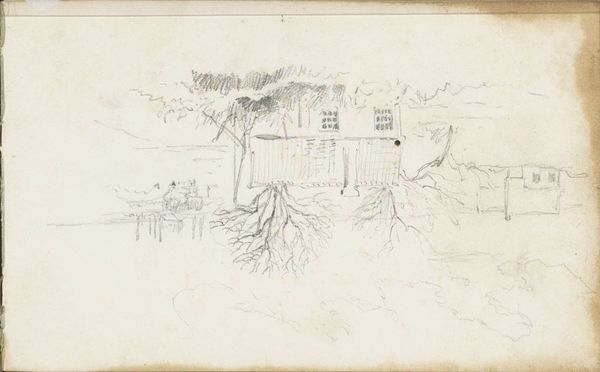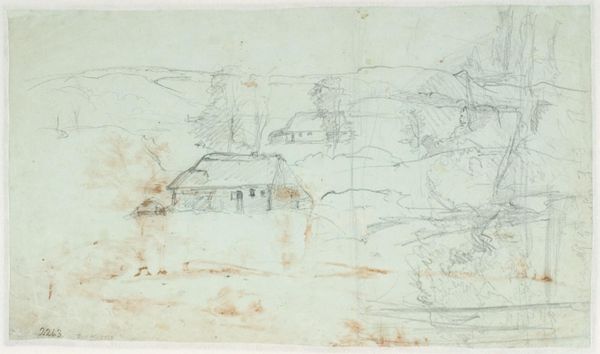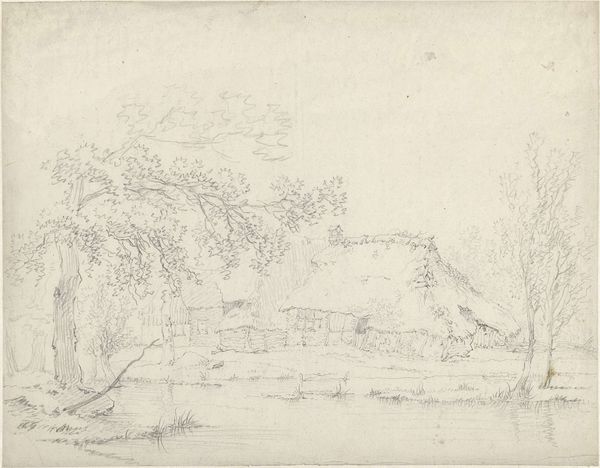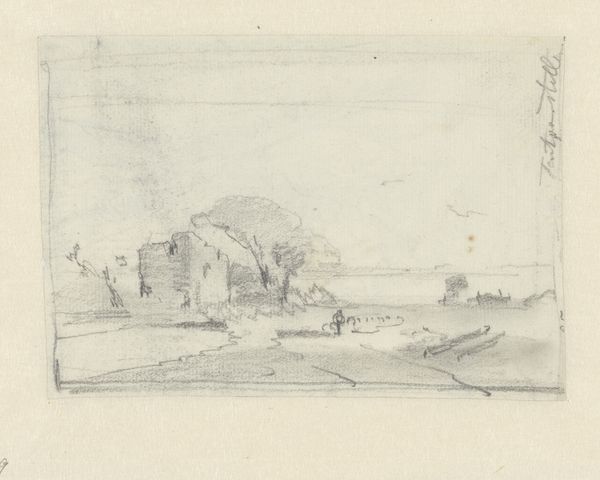
drawing, pencil
#
drawing
#
landscape
#
etching
#
romanticism
#
pencil
#
realism
Dimensions: height 90 mm, width 140 mm
Copyright: Rijks Museum: Open Domain
Editor: So, this is "Ruïne van een boerderij" – “Ruins of a Farmhouse” – by Georges Michel, dating from between 1773 and 1843. It's a pencil and etching drawing. It feels… wistful, maybe a bit melancholy. What do you see in it? Curator: The ruins speak volumes, don’t they? Buildings carry echoes of life, loss, and transformation. Here, Michel captures more than just crumbling stone and timber; he captures a fading memory. Does the farmhouse’s decay signal societal shifts, perhaps a move from rural to urban? Editor: That's an interesting point. The structure almost seems like a skeleton. Curator: Precisely! Consider the farmhouse as a symbol for something larger – family, community, tradition. The crumbling facade evokes a sense of time’s passage and perhaps a nostalgia for what's been lost. Can you see how Romanticism values feelings and yearnings associated with the past? What sort of symbolic meaning could these etched lines and delicate pencil strokes possess? Editor: The artist using such fragile media for a theme such as destruction makes a good point. Almost like memories themselves that are very delicate. Curator: A powerful association. Michel encourages us to contemplate our own impermanence, doesn’t he? He is saying something with every single line he sketches on paper. Editor: It's amazing how a simple drawing can hold so much. I will certainly carry these impressions when I see another Romanticism work. Curator: And that’s the lasting magic of art. By deciphering symbolic messages within these artworks, we unlock deeper understanding.
Comments
No comments
Be the first to comment and join the conversation on the ultimate creative platform.

